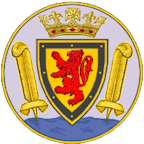History 1500 to 1600
Early in the 16th century Henry VIII instigated the Reformation of the English Church. Two Saltash men, Nicholas Kempe and Peter Gryslinge, were imprisoned for allegedly having spoken words criticizing Henry. A priest and schoolmaster of Saltash, one Andrew Furlong, was also imprisoned, merely for possessing a Bible! A chantry chapel which had been established on the southern side of St Nicholas's Chapel was demolished during the Dissolution of the Monasteries in 1547.
The Reformation continued with the introduction of the English Book of
Common Prayer in 1549. The change was widely unpopular, and the people of
Devon and Cornwall rebelled. Many Cornish people still spoke their old
Celtic language and understood Church Latin better than English, which was
to them a foreign language. Class feeling was also a factor, and the
gentry in the Saltash district found themselves involved in the ensuing
violence. They and their families took refuge in Trematon Castle, only to
be besieged by some of the rebels. Eventually, the elderly Sir Richard
Grenville was enticed outside to parley, but was seized, and threatened
with death, unless those inside the castle surrendered. The ladies were
stripped from their apparel to their very
smocks, and some of their fingers broken, to pluck away their rings
,
and the men were carted off to the gaol in Launceston Castle, there to
remain until the rebellion was crushed two months later.
After the rebellion was quelled, the Borough of Saltash was enfranchised by Edward VI and, from 1552 until the Reform Act of 1832, sent two members for the borough to parliament.
Its twin sources of wealth (the river and the market) continued to serve Saltash well. The waterside was a flourishing area where both boat building and fishing continued to be major industries. Saltash fishermen not only supplied the local people with fish and shellfish, but frequently sent cargoes of pilchards to the Mediterranean. The Mayor and Corporation did not just use their growing wealth and position for personal advancement, but ploughed money back into the town. A school was built, partially on the site of the old chantry chapel. By 1573 the Corporation had erected two market houses in the area around the market place, one of which stood on the site of the present Guildhall. (The site of the other building is unclear.)
Francis Drake returned in 1580 from his great voyage around the world, carrying huge quantities of bullion plundered from Spanish settlements and ships. His ship, Golden Hind, was brought up the Tamar, and the treasure was unloaded here (probably at Antony Passage) so that it could be safely stored in Trematon Castle while arrangements were made for a train of pack-horses and wagons to carry it to the Tower of London.
In 1584 Queen Elizabeth I granted Saltash a new charter, the first to contain any updating of the Corporation's constitution, duties, rights, and privileges. The Corporation’s de facto role in the running of the ferry and various waterside industries was officially recognised, the Borough being given ‘Silver Oar’ jurisdiction which allowed it to administer water courts and to hold an official seal. This privilege, however, was to last only until 1610, when Duchy property was declared inalienable, the ferry and the Liberty of the Water Tamar were repossessed, and the Corporation had to lease once again from the Duchy. This charter mentioned "the defect of the structure, enclosure and walling of ..... the quay of the town", as a consequence of which the town quay, the oldest quay in the area, was duly rebuilt around 1586.
Queen Elizabeth was also involved in the founding and endowment of Saltash Grammar School, to which she contributed £6 17s 2d per annum, a sum that continued to be paid (by the Duchy of Cornwall) right up until 1871.
In 1587 Drake (by now Sir Francis), having taken the great carrack San Felipe during his raid on Cadiz, brought her back to Saltash where her cargo, some hundreds of tons of precious gems and bullion together with chests of rare spices and bales of silk and velvet, was discharged and inventoried, to the wonder of the townsfolk. Its total value was £114,000 (the equivalent of over £35 million today) – the richest single 'prize' ever brought back to England.
page updated 2025-03-21
